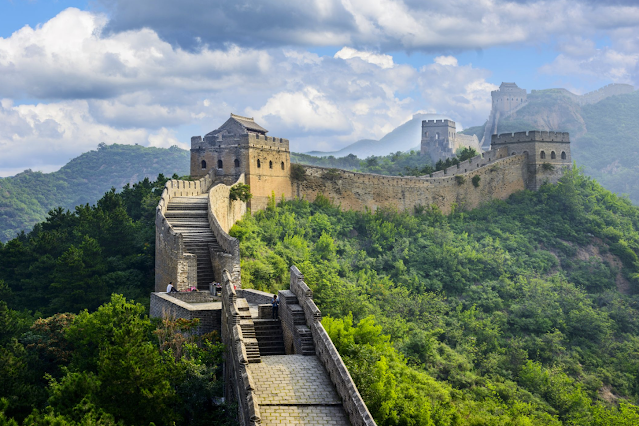The Soul of the Dragon: Journey to the Great Wall
In the quiet hours of an early morning, as the fog clung to the earth like a sacred shroud, I stood before the vast expanse of the Great Wall of China. To utter that it was simply 'awesome' would be to strip it of its profound energy, its historic breaths that seemed to pulsate through the very stones under my feet. I felt small, not just in size but in the face of the innumerable stories that had unfolded upon this architectural marvel stretching beyond horizons.
The Wall, over 2,000 years a sentinel of eternity, cradled a history that was as majestic as it was wrought with the strife of human endeavor. Conceived by Qin Shi Huang, the first emperor to claim the fractured lands and birth a unified China, it was more than a barrier—it was a statement of unyielding power. Known as "Wan-Li Qang-Qeng," translating to the '10,000 li long wall,' it etched a line between the known and the unknown, between civilization and the barbarians at the gates.
These so-called barbarians, nomadic tribes whose entire existence seemed so alien to the structured lives within the empire, were the catalysts for the Wall's creation. After Qin Shi Huang burned through years and resources in its construction, what ensued was not peace but a constant and pulsing threat from the northern steppes. The Xiongnu, fierce as the storms that scarred their lands, would become a specter that haunted the edges of this empire.
As centuries unfurled like scrolls of history, the Wall ebbed and flowed with the fortunes of those who claimed dominion over this land. The Han Dynasty saw the Wall stretch even further, pushing back the darkness of the unknown, while the Ming Dynasty transformed it into a fortress of such sophistication it seemed impenetrable. And yet, despite these monumental efforts, the tides of time brought new conquerors over its battlements—the Mongolians and the Manchus, each in turn rewriting the narrative of this land.
It was here, amidst the whispers of the wind that spoke of empires risen and fallen, that I found a reflection of my own existence. The Great Wall, for all its imposing might, was a monument to human resilience as much as it was to our follies, our fears. Each stone laid in its foundation was a testament to a determination that transcended generations, a desire to protect what was cherished, and a stark reminder of the fragility of our constructs in the grand theater of time.
As I traced my fingers over the weathered stones, I could almost feel the pulse of history beneath my touch. The ruins of the Ming-era wall that sprawled before me, with bricks and granite laid by countless hands now lost to time, were not merely remnants of a bygone era but cables connecting me to the past, to the essence of humanity's indomitable spirit.
In the shadows of the Great Wall, I found not just the story of China but the story of all of us—our struggles, our triumphs, our enduring hope. And as the sun broke free from the clutches of the morning mist, bathing the wall in a golden light, I was reminded that even in our darkest moments, there is beauty to be found, lessons to be learned, and always, always a path forward.
Why do people flock to this ancient fortress, you ask? It's not simply to marvel at its grandeur or to stand atop its battlements gazing into the distance. It's to connect with something larger than ourselves, to feel the weight of history, and to find comfort in the knowledge that, just like the Great Wall, we too are capable of withstanding the tests of time, of leaving a mark that will endure long after we're gone.
In the echo of every footstep upon its path, the Great Wall whispers the truth of our existence—the undeniable strength of the human spirit, capable of both creating and overcoming barriers, forever reaching towards the horizon with hope as our guide.
Tags
Vacations
